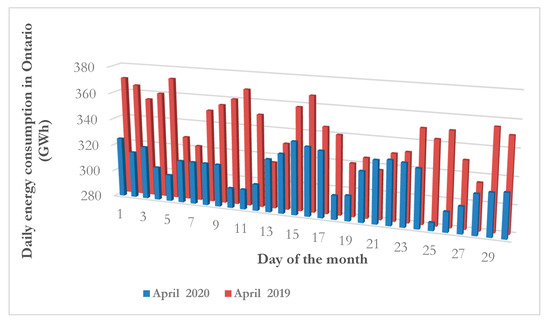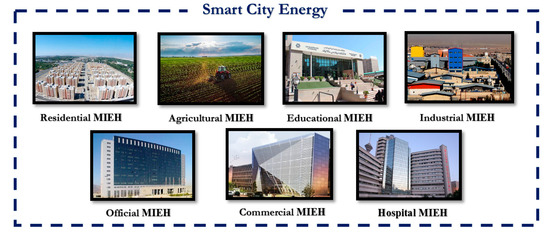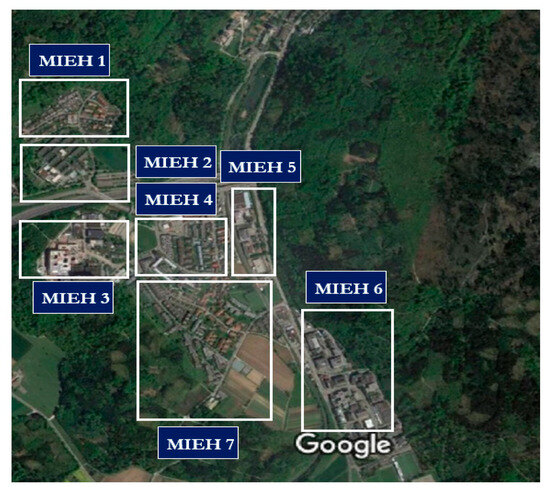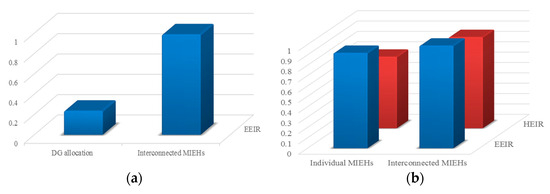Your browser does not fully support modern features. Please upgrade for a smoother experience.
Please note this is an old version of this entry, which may differ significantly from the current revision.
Subjects:
Transportation
Although the severity of the COVID-19 pandemic has appears to have subsided in most parts of the world, nevertheless, in addition to six million deaths, it has yielded unprecedented challenges in the economy, energy, education, urban services, and healthcare sectors. Meanwhile, according to reports, smart solutions and technologies have manifested considerable success in achieving pandemic-resilient cities.
- smart city
- social capital
- situational awareness
- energy hub
1. Pandemic and Energy Systems
The excessive integration of renewable units with uncertain generation will eventually face an obstacle called energy security. With the spread of the coronavirus, governments have been forced to close or reduce their commercial and industrial activities to reduce the spread of the virus.
These changes, in addition to increasing residential sector demand, have caused significant decreases in commercial and industrial demand and the entire demand on electricity systems. For example, in Ontario, Canada, a significant decrease in demand was created in April 2020 compared to the same period in the previous year, as shown in Figure 1 (data taken from [123]).

Figure 1. Comparison of Ontario’s daily demand in April 2019 and 2020.
The excessive reduction in consumption during daytime hours can cause the deepening of the duck curve. The duck curve was introduced by California’s energy system operator and shows the energy that the operator must provide during the day and in the absence of renewables through conventional generation resources. For example, in California, on a typical day, people use a lot of energy in the morning before going to work and at night when they return home. According to [124,125], in this case, the amount of power that the operator must add to the network during the day with the help of conventional resources to match the generation with the demand draws a shape called a “camel curve”. In the meantime, when an energy system has substantially benefited from solar energy, with solar energy generation increasing in the middle of the day, the net load over a day (i.e., the total electric demand minus renewable generation) is similar in shape to a duck, hence being named a “duck curve”.
The realization of a duck curve in a pandemic period presents challenges to energy systems that include increasing startup and shutdown costs of power plants, reducing reliability as a result of reducing the committed conventional units with automatic frequency response capability, and continuous generation changes [1,123,124,125,126,127,128,129,130,131,132].
2. Energy Hubs’ Contributions to Resilient Energy Infrastructure Fulfillment
Since, with the advancement of technology, most urban infrastructures—such as transportation, communications, water and wastewater, teaching, and health systems—are interdependent with energy, resilient energy infrastructure can lead to resilience in all of these systems, or infrastructure resilience. In other words, an urban energy system that is immune to damaging physical/cyber crises and integrated with a high percentage of renewables can be mentioned as a transformational development architecture for prospective smart cities [133].
Energy resilience is a significant strand of resilience that has not been well studied by urban studies researchers [134]. However, resilience and energy have been addressed together by some urban energy studies that aimed at designing resilient energy systems [133,135,136,137,138]. In [135], an overview of the research aiming to improve resilience against climate change in urban energy infrastructure was conducted. The researchers in [133] emphasized the necessity of achieving security and resiliency for future urban energy systems with the penetration of renewable energy sources. In this context, [136] aimed to describe the nexus between urban resilience and energy efficiency in the context of urban energy systems. The researchers in [137] described three major methods to achieve resilience in urban energy systems against earthquake disasters, including hardening the grid and demand side, the Monte Carlo method for the earthquake threat model, and the k-means method to determine the multiple vulnerable zones. In [138], a strategy is provided to promote energy performance through changing the urban physical environment as a design perspective for achieving resilient energy systems.
The existing critical, industrial, commercial, residential, and agricultural facilities in smart cities can be considered to be energy hubs (EHs), which are multicarrier energy system frameworks for the generation, conversion, storage, and consumption of energy. The EHs in smart cities can be interconnected together through the existing urban power or/and natural gas distribution grids, equipped with information infrastructure, as demonstrated in Figure 2. The smart city, as a macro-EH (MAEH) consisting of interconnected micro-EHs (MIEHs), can provide a flexible and resilient energy infrastructure [9,140]. This section describes smart city energy as interconnected energy hubs that can lead to a high level of flexibility in dealing with the main challenges of the electricity industry during pandemics.

Figure 2. Smart city energy infrastructure, including micro energy hubs.
- 1)
-
Smart technologies
Smart EHs’ contributions in providing smart metering, automation, control and operation solutions make them an effective framework, compared to the conventional energy systems [1] [2] [3]. The smart metering system mostly known as advanced metering infrastructure (AMI) provide the EHs operators with the energy-awareness [10, 152] resulted from the metered energy data, to facilitate the demand response (DR) and energy efficiency (EE) programs as two demand side management (DSM) strategies [4][5]. Furthermore, integrated demand response realization through smart EHs provides demand response policies with less pressure on consumers. That is, by decreasing the amount of electricity imported from the upstream network, EHs can provide energy during the peak load hours via gas injection and using cogeneration units. Consequently, EHs can provide the smart cities’ energy system with integrated and smart distributed management of electricity, heat, and gas networks utilizing the urban information infrastructure [22,25,26,27,141,142].
- 2)
-
Redundancy
Energy-hub-based systems can establish additional connections between input and output through the generation, storage, and conversion units. This redundancy in supply leads to two important advantages: First, the reliability increases from the load point of view, as the supply of demand is no longer completely dependent on a unique network and unit. This is advantageous in a pandemic crisis, since the supply of electricity to hospitals and critical centers can be provided continuously and reliably.
As a second advantage, the degree of freedom in supply is increased, which provides the optimal supply of electricity demand. This can be advantageous in the face of economic impacts during pandemics, as energy supply costs in various urban areas, including residential areas, can be further reduced. Furthermore, energy carriers can be prioritized according to various criteria, including economic, emissions, and reliability criteria [31,143,144,145].
- 3)
-
Energy storage
Increases in renewable resource integration require flexibility improvements, which can be provided through energy storage systems. Although experts emphasize more need for flexible storage systems to prevent disruptions to the power system during pandemics, which affect the effective response of health services and hospitals, the energy storage installation trend is faced with risk due to the pandemic’s destructive financial impact. Energy storage systems can be a promising option in maintaining the security and stability of networks and dealing with challenges raised by the creation of a duck curve. The potential of EHs for containing a wide range of energy storage adds to these advantages. Converting the excess generation of renewable resources to other forms of energy with the help of innovative storage technologies provides the possibility of long-term energy storage for use in other consumption sectors, such as transportation and heating. Among the promising technologies are power-to-gas systems, which convert excess electric energy from renewable sources into hydrogen or methane and store it [146].
- 4)
-
Infrastructure integration
The opportunities presented by EHs in energy infrastructure integration improve resiliency by providing efficient operation of renewable units and dealing with demand fluctuations. The possibility of integrating electricity and gas systems makes it possible to manage renewable resources’ generation during the crisis period and prevent curtailments. Furthermore, this integration framework in EHs facilitates resilient supply through urban gas infrastructure when the electricity system fails, and vice versa. Briefly, important challenges that arose during the pandemic crisis, which warned against the integration of more renewables, have been solved through this resilient framework [140,147].
3. Case Studies
3.1. Background
The framework for energy-hub-based energy infrastructure is presented in [19,144,145], where the smart city energy infrastructure is modeled as critical, residential, commercial, industrial, and agricultural micro energy hubs (MIEHs), which are designed according to their reliability and resiliency priorities. In the frameworks presented in [19,144,145], reliability and resiliency priorities in the planning process are modeled by considering the customer interruption cost (CIC) and cost of energy not supplied (CENS) in the objective function. These MIEHs can operate either individually or interconnected through the urban natural gas and electricity distribution networks. The framework is intended to minimize the investment cost of multiple energy generation, conversion, and storage systems in MIEHs, as well as the CIC and CENS, while constrained by multiple generation, conversion, and storage systems as well as the electricity and natural gas networks’ limitations. The mathematical formulations, as well as the electrical and heat loads, gas pipeline and electric distribution grid characteristics, multiple generation, conversion, and storage system parameters, and other information, can be found in [19,144,145]. The frameworks proposed in [19,144,145] are formulated as mixed-integer linear programming (MILP) models and simulated by GAMS software [148].
3.2. Case Study: IEEE 33-Bus Resilient Energy Infrastructure
Based on the framework proposed in [19], the performance of the proposed planning framework based on interconnected MIEHs in achieving a resilient smart city energy infrastructure was evaluated. The proposed planning model was implemented on the standard IEEE 33-bus distribution test system, as shown in Figure 3. The problem statement, formulation, and more detailed information are available in [19]. According to Table 2, the preparation of the energy infrastructure based on the proposed framework in upstream grid interruption status resulted in acceptable values for the CIC and CENS.

Figure 3. The standard IEEE 33-bus distribution test system, including MIEHs.
Table 2. Resiliency evaluation criteria resulting from case study (1) (adapted from [19]).
| CIC (p.u.) | ENS (p.u.) | |
|---|---|---|
| Without preparation | 1 | 1 |
| Preparation based on DG allocation | 0.625 | 0.784 |
| Preparation based on interconnected MIEHs’ planning | 0.003 | 0.012 |
3.3. Case Study: Dättwil Resilient Energy Infrastructure
Based on the framework proposed in [144], the performance of the proposed planning framework based on interconnected MIEHs in achieving a resilient smart city energy infrastructure was evaluated. The proposed planning model was implemented in a real urban case study (the Dättwil area in Switzerland), as shown in Figure 4 (the figure was sketched by the authors, considering the idea taken from [144,149], while modifications were made in line with the topic of this paper). The problem statement, formulation, and more detailed information are available in [144]. According to Table 3, the preparation of the energy infrastructure based on the proposed framework in upstream grid interruption status resulted in appropriate values for the CIC and CENS.

Figure 4. The Dättwil area in Switzerland.
Table 3. Resiliency evaluation criteria resulting from case study (2) (adapted from [144]).
| CIC (p.u.) | ENS (p.u.) | |
|---|---|---|
| Without preparation | 1 | 1 |
| Preparation based on individual MIEHs planning | 0.068 | 0.073 |
| Preparation based on interconnected MIEHs planning | 0.001 | 0.013 |
3.4. Analysis
As the values of CIC and ENS move away from 1 and approach 0, it can be seen that the method implemented in planning the smart city energy system is superior for achieving a resilient and reliable energy infrastructure.
As mentioned in Table 2, the resiliency criteria when employing the proposed planning framework based on interconnected MIEHs show significant improvements in designing a resilient smart city energy infrastructure compared to common methods based on diesel generator (DG) allocation. Furthermore, as described in Table 3, the resiliency criteria resulting from the proposed framework in a real urban case study (the Dättwil area in Switzerland) show significant superiority compared to the preparation of the smart city energy infrastructure based on individual MIEH planning, in terms of upstream grid interruption status.
In addition, the comparison of the energy index of reliability for both electrical systems (EEIR) and heat energy systems (HEIR) in case studies (1) and (2) indicates that the preparation of energy infrastructure based on interconnected MIEH planning resulted in significant success in increasing the system resilience, as shown in Figure 5. This can yield effective management of high-impact disasters in smart city energy infrastructure.

Figure 5. Comparison of EIR in (a) case study (1): IEEE 33-bus resilient energy infrastructure, and (b) case study (2): Dättwil’s resilient energy infrastructure.
Briefly, it can be concluded that smart city energy infrastructure including interconnected MIEHs can lead to a high level of resiliency in dealing with the main challenges of the electricity industry during pandemics. Energy-hub-based smart cities can contribute to designing pandemic-resilient energy infrastructure, which can also significantly affect resilience in economic and health infrastructure.
This entry is adapted from the peer-reviewed paper 10.3390/en16186479
References
- A. Fereidunian, H. Lesani, C. Lucas, M. Lehtonen, M. M. Nordman; A Systems Approach to Information Technology (IT) Infrastructure Design for Utility Management Automation Systems. IJEE 2006, 2, 91-104, .
- A. Fereidunian, M. M. Hosseini, and M. Abbasi Talabari; Toward self‐financed distribution automation development: time allocation of automatic switches installation in electricity distribution systems. IET GTD 2017, 11(13), 3350-3358, .
- B. Tavassoli, A. Fereidunian, and M. Savaghebi; Communication system effects on the secondary control performance in microgrids. IET Renewable Power Generation 2020, 14(12) , 2047-2057, .
- M. Kojury-Naftchali, A. Fereidunian and H. Lesani, "Identifying susceptible consumers for demand response and energy efficiency policies by time-series analysis and supplementary approaches," 2016 24th Iranian Conference on Electrical Engineering (ICEE), Shiraz, Iran, 2016, pp. 1130-1135, doi: 10.1109/IranianCEE.2016.7585691.
- A. Alizadeh, M. R. Saghafi, J. Rezaei, A. Fereidunian and H. Lesani, "Performance-Based Regulation Framework for Demand-side Management," 2019 24th Electrical Power Distribution Conference (EPDC), Khoramabad, Iran, 2019, pp. 54-59, doi: 10.1109/EPDC.2019.8903761.
- A. Alizadeh, M. R. Saghafi, J. Rezaei, A. Fereidunian and H. Lesani, "Performance-Based Regulation Framework for Demand-side Management," 2019 24th Electrical Power Distribution Conference (EPDC), Khoramabad, Iran, 2019, pp. 54-59, doi: 10.1109/EPDC.2019.8903761.
This entry is offline, you can click here to edit this entry!
